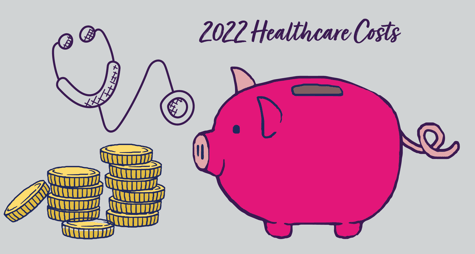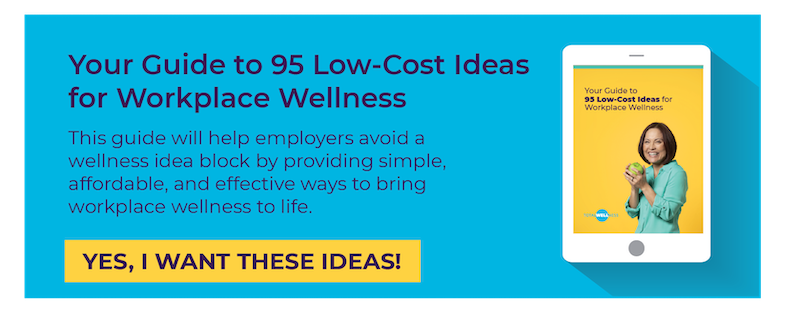 Have you been preparing for a healthcare cost hike come January 1?
Have you been preparing for a healthcare cost hike come January 1?
If not, it’s time to seriously start considering how healthcare costs will eat into the company budget if you offer employees healthcare plans.
Many U.S. employers are now looking at ways to prioritize employee wellbeing and healthcare affordability as health benefits are expected to increase by more than 5 percent in 2022, stated an October 2021 survey released by Willis Towers Watson, a leading global advisory, broking, and solutions company.
Here’s a look at a few different survey insights and cost-saving measures employers may want to consider moving into the new year.
Why the Increase?
With so many employees who delayed care due to the pandemic (lockdowns or cancelling appointments voluntarily), 2022 will be the year of appointment catch-up for many.
The 2022 increase in healthcare costs for employers is slightly lower than this year’s 5.5% increase projected by employers, but much higher than the small increase seen in 2020. Last year, the increase in healthcare costs was the smallest in decades as many postponed non-emergency care and hopped onto virtual calls with doctors instead.
The costs of goods and services increasing will create a rebound effect in the upcoming year. Hospital price inflation appears to be the biggest driver in the rise of healthcare costs.Healthcare prices are also being impacted by labor shortages, wage inflation, and supply constraints.
Because of all that, healthcare costs inevitably are on the upswing.
Why Companies Are Investing Now More Than Ever
As has been witnessed repeatedly throughout the pandemic, employees suffered immensely both physically and emotionally, unfortunately.
These factors have led many companies to prioritize wellbeing while also improving the employee experience on a day-to-day basis. The topic of burnout has taken center spotlight more than once, making it hard for employers to ignore the physical and emotional needs of their workers.
The survey respondents are planning a variety of ways to do this:
- Nearly half of employers (45%) are using wellbeing vendors to enhance the employee experience across physical, financial, emotional and social wellbeing; another 37% are planning or considering doing so in the next two years.
- 52% are enhancing the enrollment experience, with 34% planning or considering doing so. And, 49% are adding extra choices across all benefits; another 23% are planning or considering doing so.
But, all of this improvement on the health front comes at a cost, as mentioned above. Employers must learn to navigate these cost increases one way or another if they’re to provide a better workplace wellbeing experience.
According to the Willis Towers Watson survey, 86% of employers are currently planning on tackling how they absorb a portion of cost increases or are looking at passing it onto the employee cost share. In creating a plan, the survey’s respondents are planning on prioritizing key areas to focus on.
This is how respondents are prioritizing healthcare the next two years:
Key priority over the next two years Percentage
|
Achieve affordable and sustainable costs for organization |
90% |
|
Achieve affordable costs for employees, especially lower wage employees |
86% |
|
Enhance employee wellbeing |
85% |
|
Identify programs that support diversity, equity and inclusion |
78% |
Healthcare affordability continues to be a hot topic in workplaces, especially for those with lower wage workers. The issue needs to be addressed on multiple fronts, but at a minimum, providing options to employees for health insurance is a start.
Related: Free Burnout Busters Booklet
How Can Employers Save Money on Healthcare Costs?
Shopping around and comparing insurance pricing is the number one way to save money when it comes to offering company-sponsored health plans. Keeping health at the forefront of your employees’ minds is also a key component in ensuring your workforce makes smart lifestyle choices daily to keep their health in check.
Interestingly enough, to keep employees healthy, some of the largest employers (20,000-plus employees), will decrease employee premium contributions, according to Mercer’s National Survey of Employer-Sponsored Health Plans 2021.
No matter the size of your company, managing employee healthcare costs is a delicate balancing act.
Employer respondents in the Willis Towers Watson survey plan to address affordability in a variety of ways. Here are some to consider in your own business:
- Medication adherence - Are you offering support services to help ensure that employees take their medications as prescribed? Only 13% of those surveyed do so. When offered support, it can improve health outcomes, especially in more vulnerable populations. Nearly 30 percent of employers are planning or considering offering these services.
- Premium contributions based on pay and grade - Nearly a quarter of employers (22%) currently structure employee contributions based on pay levels or job grades.
- Working spouse surcharges - A quarter of employers (25%) use spousal surcharges when additional employer coverage is available for the working spouse. Another 9% are planning or considering spousal charges in the next two years.
- Narrow networks - For better quality care, narrow the options down. Nearly a third (30%) of employers are planning or considering offering a narrow network of higher-quality and/or lower-cost providers.
- Centers of excellence - Nearly half of employers (48%) use centers of excellence within their health plans. Another 23% are planning or considering adding centers of excellence within their health plans.
- Concierge services - About a third (31%) offer access to concierge services with integrated care management programs; 25% are planning or considering doing so.
- Telebehavioral health - A majority of employers (89%) are offering coverage for telebehavioral health services, and 7% are planning or considering it.
- Onsite health promotions - More than half of employers (55%) offer onsite/worksite health promotion activities. For your workplace, this may look like a flu shot clinic, wellness challenges, or biometric screenings.
- Specialty drugs - Over half (54%) evaluate specialty drug costs and utilization performance through the medical benefit.
Final Notes on Ways to Save and Keep Employees Healthy
Some other ways to save on healthcare costs?
Remind your employees to get their annual checkups and stay on top of specialty appointments, as needed. Provide flexible scheduling when employees need to get to the doctor to allow them to get important testing and consulting done. Doing so may help them detect serious health concerns early on to get the treatment they need before a serious health condition spirals out of control.
Additionally, on top of encouraging regular check-ups, remind them of urgent care options through your company plans. ER visits are expensive — right around $2,000 on average — versus an urgent care visit that costs a couple of hundred dollars.
While company healthcare costs may be a bit more in the upcoming year, consider it an investment in your employees. The pandemic proved how fragile health is, and by providing solid company-sponsored healthcare options, you give your employees a chance to take charge — and maintain — their health.
Have your company-sponsored health plan costs gone up significantly? How does your company plan to handle healthcare cost hikes?



